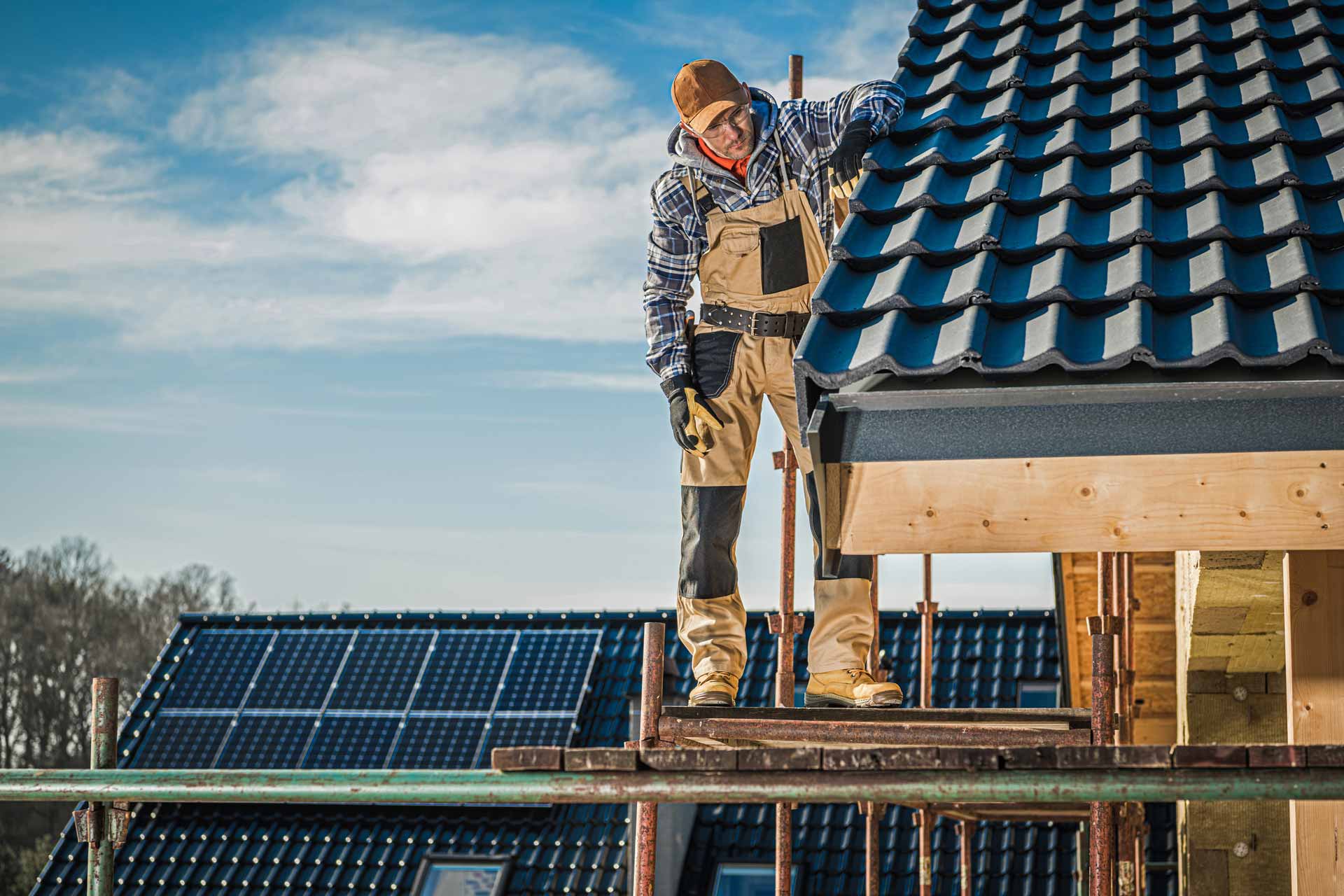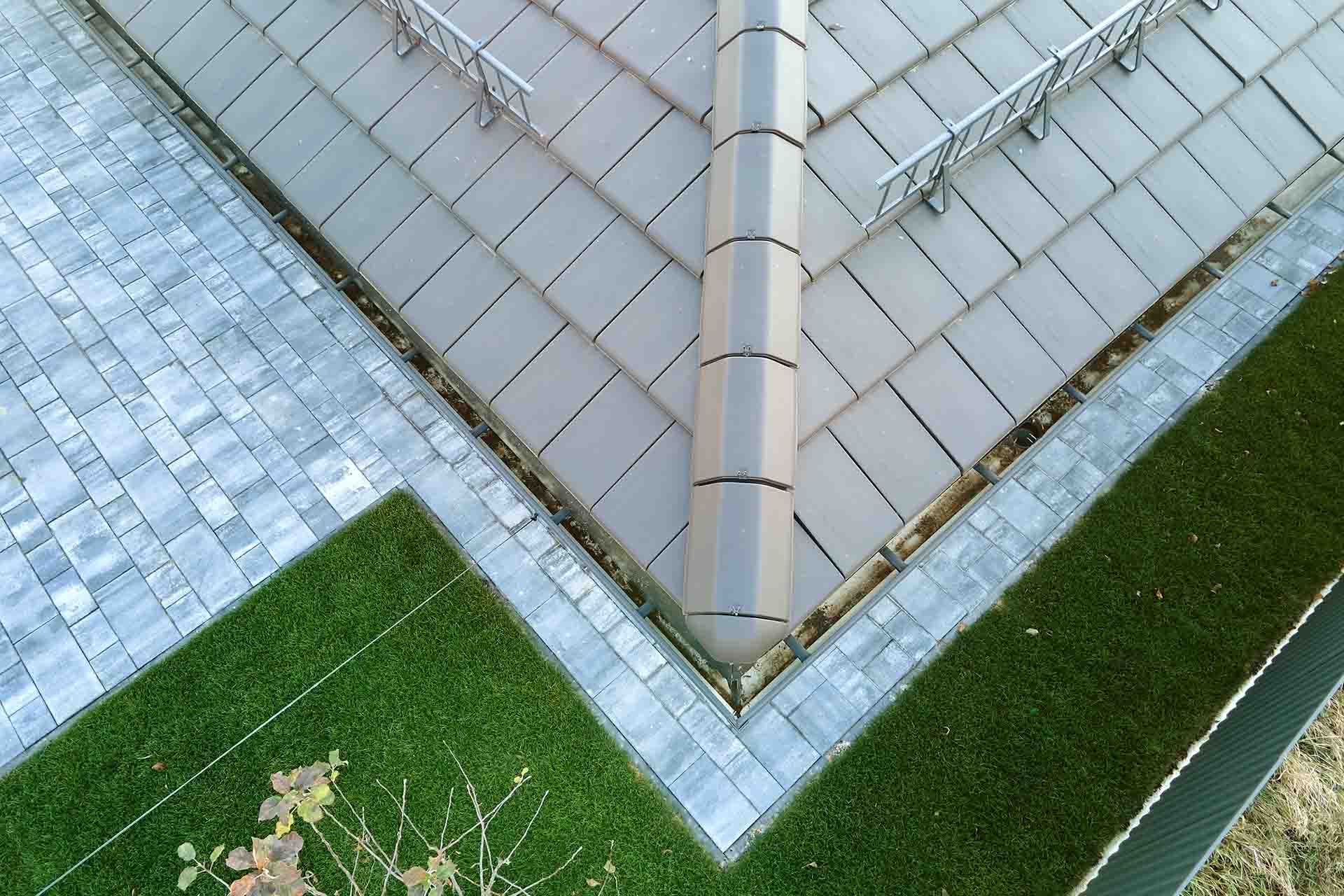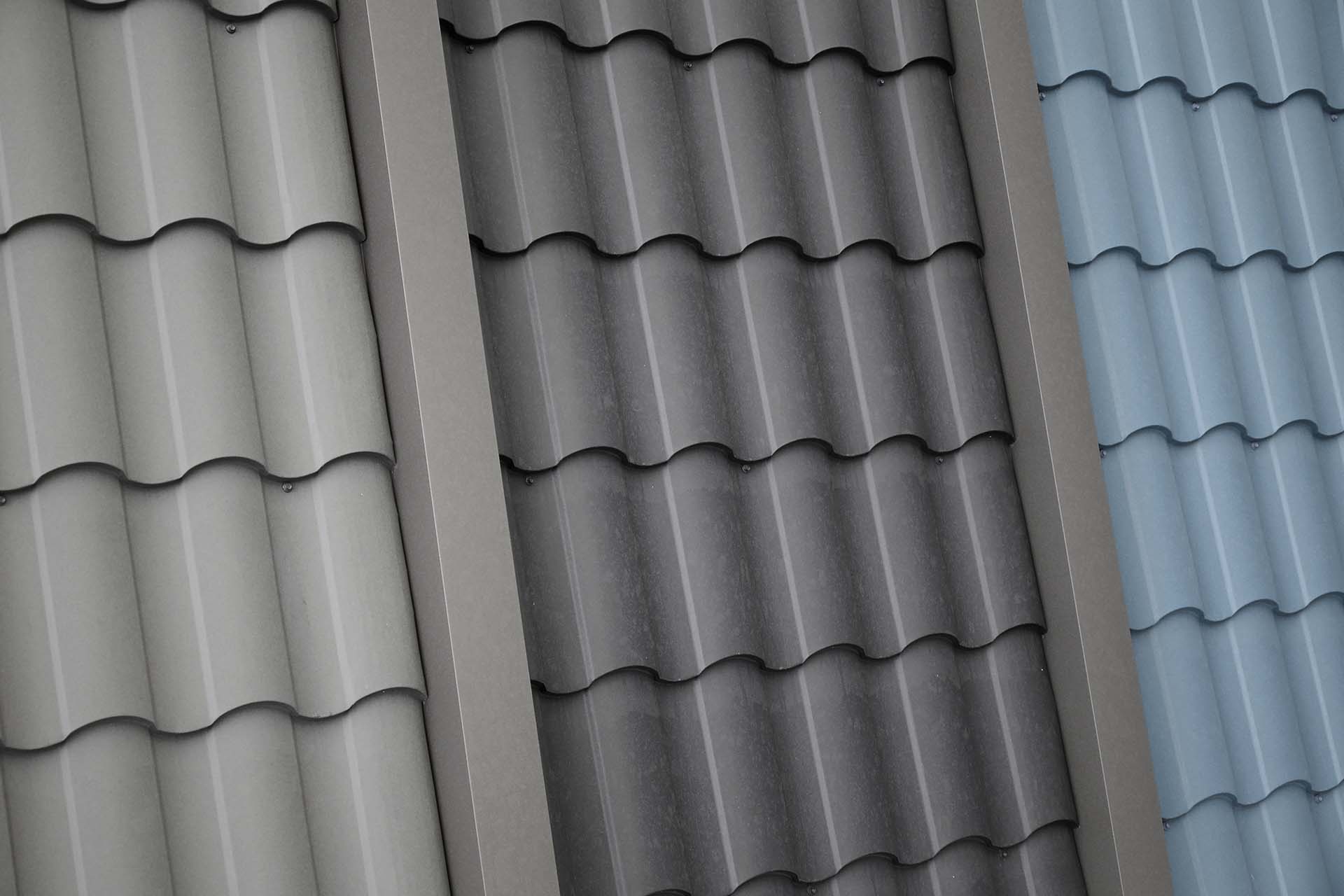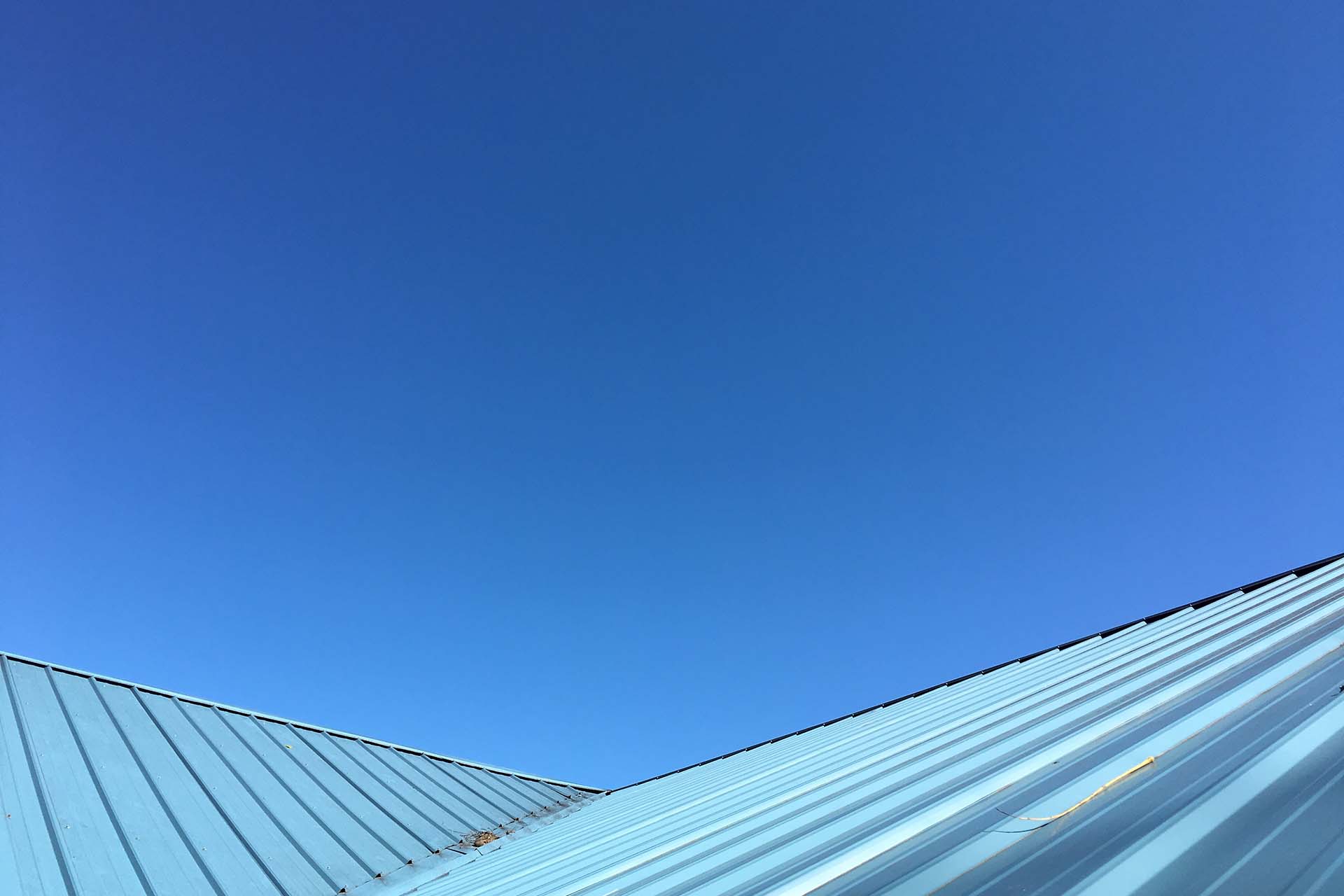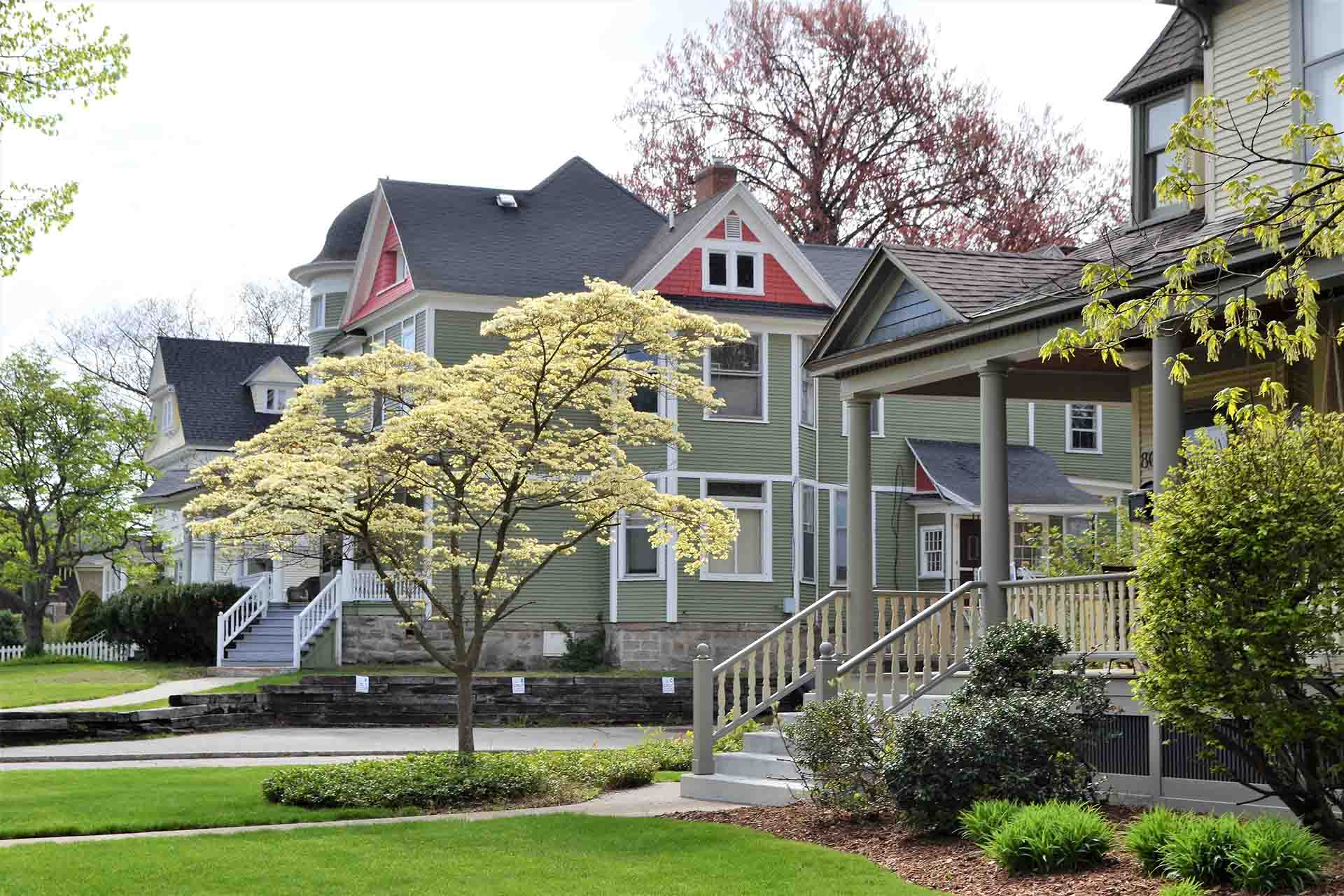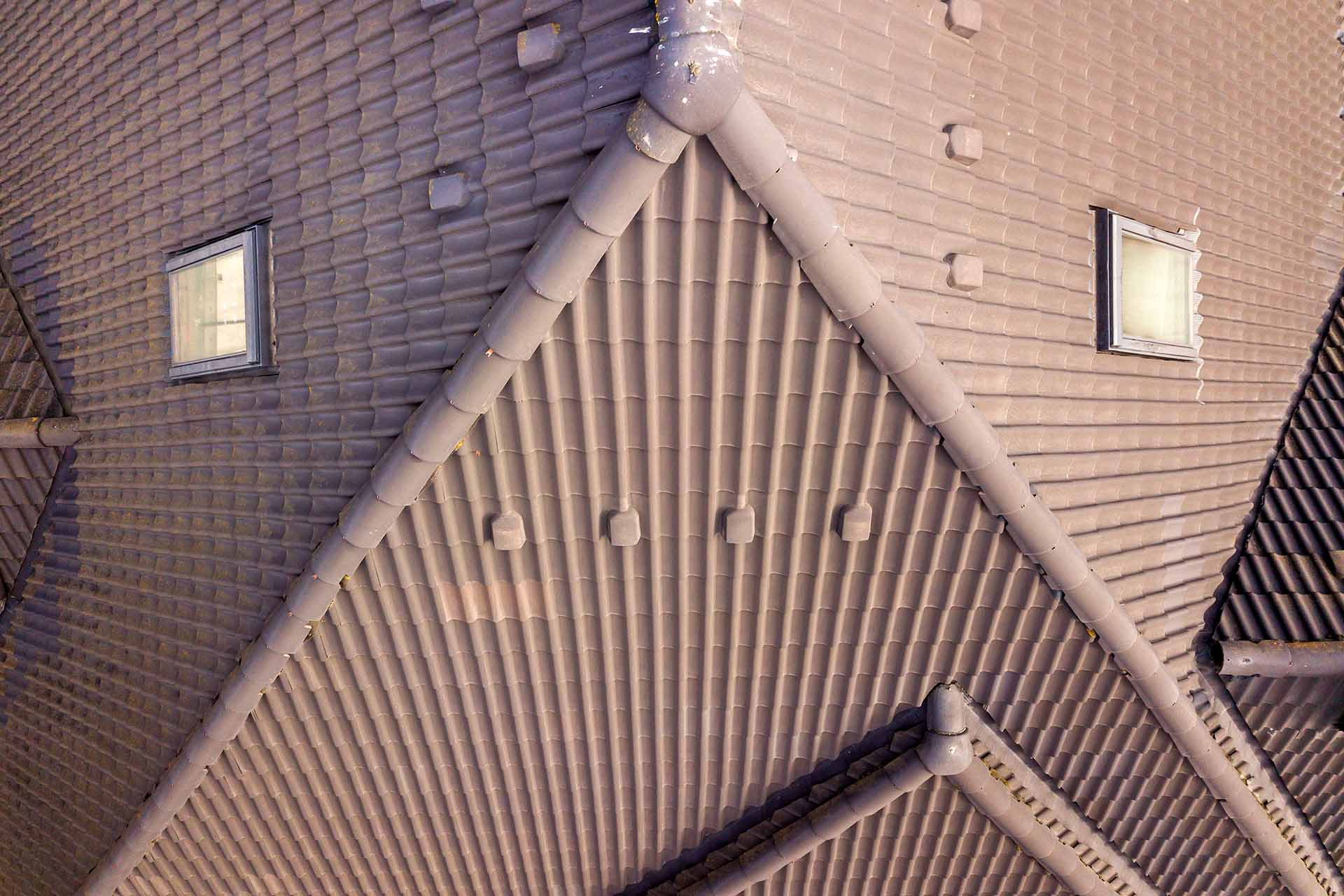What Are The Most Common Causes Of Roof Damage?
To solve any problem, you must first identify the source of the it and why it is happening. This is a general rule that is applicable to anything that you can think of, like roof repairs and replacements. When dealing with roof related issues, it not only helps to solve the problems, but it also often helps to avoid them altogether. Roof damage can be caused by a variety of factors, including leaking or improper installations. To avoid major roofing costs and keep you and your loved ones safe, you must understand how roof damage can occur. So, to help you gain more knowledge about your roof, here are the most common causes of roof damage.
Weather
The first cause can happen unexpectedly, and its severity varies all the time. Although it is impossible to avoid or control, it is still important to be aware of and keep an eye on. One of the leading causes of roof damage is weather, specifically wind and rain storms. Powerful storms can rip a portion or the entire roof off. Furthermore, harsh weather conditions can result in missing shingles, holes in your roof that can make your home uncomfortable to live in, and broken roof parts such as gutters. If you experience any storms in your area, it is best to get your roof checked out immediately, even if it appears to be in good condition, because it is always better to be safe than sorry.
Water Damage
In addition to wind, rain and snow are the most common causes of roof damage. As previously stated, leaks are the most common problem that homeowners face, and they are usually caused by heavy snow or rain that seeps through their roof. You can protect your roof from the damaging effects of rain and snow by adding extra protective layers or acting quickly if you notice leaking on your ceiling. If you fix it as soon as possible, you will save yourself a lot of trouble in the future. Moreover, if you find yourself constantly repairing your roof as a result of these problems, it may be time to upgrade to a new one and purchase metal roofing.
Gutters
Speaking of water, gutters can cause issues with your roof, as well. If they are not properly installed, or if they are broken by the wind or harsh weather conditions, the water will not be directed away. This will lead to you dealing with a lot of water on your roof and that is not good for any kind of roof. Sitting water on top of your roof can cause severe damage and water leakage that will not only destroy your living area, but will also cost you quite a lot to fix. With that being said, you must always keep an eye on your gutters to make sure that they are doing their job.
Trees
When there is strong wind in the area and an old tree or any tree for that matter is right beside your house, your roof and home is in danger of dealing with a great amount of damage. Trees and branches can cause significant damages, from damaged shingles to an entirely destroyed roof. If your house is near a tree, you must keep an eye on it. It is best that you keep a record of all the old trees near your house as a precautionary measure to avoid unpleasant surprises. This will allow you to give evidence to insurance companies when you plead that your roof damages were a result of natural causes.
No Maintenance
Roofs are undoubtedly one of the most overlooked aspects of the house. We only pay attention to it when there is a problem and end up spending a lot of money on it. Roof damage is also caused by a lack of maintenance and periodic inspection, since undetected damages can get worse over time. So, the sooner you detect an issue, the less difficulties you will have. That is why it is important to always be aware of the condition of your roof. Routine check up and inspection would avoid your home from getting damaged and will save you a lot of money in the long-term.
Birds and Little Rodents
It is common for homeowners to underestimate the impact of these small creatures that roam around. They can pull away shingles and vent covers, which weakens the roof, in their hunt for food and other resources that keep them alive.. It is best that you keep an eye out for not just birds, but also cats, mice, rats, racoons, and other animals because all of them can cause damage to your roofing. If you notice that there are permanent animals living in your home, it is recommended that you get rid of them right away before they can damage your home.
Keeping your roof in the best condition will expand its life expectancy and save you a lot of money and time. A part of maintaining your roof and taking care of it is knowing how the problems related to it are caused. Some of the common causes of roof problems that most homeowners face are weather, water damage, poorly installed or defected gutters, trees, poor maintenance and birds or little rodents. If you notice any of these signs, it is best that you call a roofing contractor in order to have them dealt with.
What Should I Look For In A Metal Roof?
Metal roofing has dominated the general roofing market. Steel and aluminium roofs, for example, may now be created to seem like wood, stone, or clay, thanks to new invention and advancements. Metal roofing in shingle, shake, slate, and tile forms has resurrected the metal roofing sector. For decades, metal roofs meant crumpled panels that looked like they were suited for sheds or barns, or standing-seam installations that looked industrial. Metal roofing solutions are now available to accommodate every architectural style, from a Spanish Colonial in Southern California to a Victorian in New England. If you are considering purchasing a metal roof and gain as much as you can from its benefits, then you should consider these factors when choosing the right one for you and your home.
Materials
Steel, aluminium, or copper are the most common materials used for residential metal roofing. Wheels of 24- or 26-gauge steel sheets are coated with a metallic coating to prevent rust, then painted with a baked-on finish. Although aluminium sheets do not require a metallic covering, they are painted. Because copper weathers without corroding, it is generally referred to as a natural metal product. It is occasionally utilised for unique elements, such as the roofing of a conspicuous bay window. Steel roofing materials are coated with either zinc or an aluminium-zinc alloy. Galvalume has the longest service life of the two. The coatings are available in a variety of thicknesses; the thicker the coating, the longer the service life and the greater the cost.
Textures/ Finishes
Metal roofing systems come in a variety of designs and are normally placed as interlocking panels with concealed fasteners or connections. When viewed from a distance, they provide reasonably accurate representations of shingles and tiles. Some 'stone-coated' goods have an acrylic covering with incorporated stone particles, which makes the roof have a less metallic appearance. Standing-seam metal roofs appear to be long sheets of coated steel with upright seams. They are a more pure product in terms of design, but they are not ideal for every home. Standing-seam roofs are possibly best suited to the clean lines of cabins and modern housing designs.
Benefits
The fundamental advantage of metal roofing is its durability. Manufacturers frequently provide 50-year guarantees, as well as lifelong, non-prorated warranties. They promise that their goods will endure two to four times as long as asphalt shingle roofs. You will more than recoup the greater initial cost by eliminating one or two re-roofing projects throughout the lifespan of the metal roof itself. In the short run, a new metal roof recoups somewhat more of its installation cost than a new asphalt roof. In addition, there are further benefits that metal roofs have to offer. Metal roofing shingles are lightweight and may occasionally be put directly over existing roofs. Moreover, solar energy is reflected and released rather than transmitted as heat when metal roofing is coated with specially designed "cool pigments." Furthermore, metal roofs are good in stopping the development of flames of fire when burning embers land on top of them, like brush and forest fires. In fact, some insurance companies may offer a discount if you have a metal roof. Furthermore, metal roofing is constructed with a high amount of recycled metal, which is often 95 percent, and after its useful life is through, it can be recycled again. There's no need to be concerned about it taking up valuable landfill space.
Myths
Myths and tales develop from a wide range of individuals, locations, and building materials. Metal roofs seem to have more than their fair share, which may be due to the numerous alterations it has undergone throughout the years. Below are some of the most typical misconceptions about the overall product. To begin with, metal roofs are thought to enhance the risk of a lightning strike. This is not correct since metal transmits electricity but is not drawn to it. Furthermore, some people believe that metal roofs are loud and disturbing in the rain when, in fact, they are quieter than most other types of roofs. Others believe that metal roofs are prone to hail damage. Despite unusually large hailstones can damage a metal roof, regular hail storms will do no such thing to them. Also, some people believe that you cannot set foot on a metal roof. In reality, you can but you have to be careful since there is a certain way to do so. Another myth that some people think is true is that a metal roof will affect your home's temperature during the winter and make your living area colder than it should be. Again, this is not true because the metal roof has no effect on this aspect of your home, since the insulation under it is the part that keeps you and your family warm.
Metal roofs are a perfect choice when considering upgrading your roofing. They provide various benefits like durability, amazing longevity and a wide selection of designs. If you are considering purchasing a metal roof, you have to be sure that you pick the right one for you and your home because this is indeed a significant purchase. When selecting a metal roof, you have to look for the material options, the possible textures and finishes, the benefits that each type provides and the truth behind the myths about metal roofs that are being spread around the general public. By doing all of this, selecting the right metal roofing option will come with ease for you.
What Are The Different Types Of Metal Roofs?
If you are considering replacing your roof, you must have metal roofs as one of your potential choices. Metal roofing offers various advantages, making them worth every penny of their price. They are not only durable and long-lasting, but they also require little maintenance and have a positive effect on the environment. Furthermore, metal roofs have a wide variety of types, each having their own distinctive qualities that can accommodate your needs. Here are the different types of metal roofs that you may choose from.
1. Aluminium Roofing
An aluminium roof is low-maintenance, has a long lifespan, and is available in a range of colours. Aluminium roof panels are primarily used for architectural roofing rather than structural roofing. Installing an aluminium roof on your home is advantageous for a variety of reasons. To begin with, metal does not rust. Because aluminium is corrosion resistant, it is an excellent choice for homes in wet areas or near bodies of water. In addition, aluminium is the lightest roofing material, weighing as low as 5 pounds per square foot. A lightweight roof is useful since it places less strain on your home's structure than heavier materials. Furthermore, aluminium is a pliable material that may be readily shaped into various profiles, giving you several design options to potentially make.
2. Copper Roofing
Copper roofing is well-known for its eye-catching and one-of-a-kind look. Over time, the copper will change colour, moving from appearing like a fresh penny to a blue-green or brown patina. The patina will change based on the climate to which it is exposed. Copper roofs are also available in a variety of forms, including tiles, shingles, panels, and sheets. Most people like this style of roofing because it offers several benefits. Copper roofing, for example, is beautiful, has a long lifespan, and is appropriate for places that endure water-related weather conditions. One of the main reasons people select copper is because of its eye-catching and unique look. It changes colour as it patinas, and the inherent differences in colour caused by this process make each copper roof seem distinct. Copper roofing outlasts nearly all other types of roofing. Copper has been known to survive hundreds of years, so you can anticipate your copper roof to last at least 60 to 100 years or more. In reality, prominent historical structures all over the world with copper roofs demonstrate that copper can withstand the test of time. The natural process that changes copper from a bright penny to a blue-green tint also makes it corrosion resistant. After being exposed to dampness and patinas, a protective layer is created, which keeps the roof from rusting.
3. Steel Roofing
Steel is a metal alloy composed of iron and other metals. Steel roofing has long been used on business structures, but it is also becoming popular for use on residential residences because of its affordability, longevity, and little maintenance. Steel roof care is minimal, especially when compared to other forms of roofing. It is crucial to remember, however, that steel roofing operates best when all leaves, branches, and debris are removed from the roof. You should also avoid gathering debris in gutters and on the roof itself, since this might lead to corrosion issues in the future. Furthermore, steel roofing will not decay or develop mildew problems. It is also resistant to termite and rodent infestation. One of the most significant benefits of steel roofing is that it is one of the few fire-resistant roofing materials available. When properly installed, it has the best fire rating available, Class A, making it ideal for areas prone to wildfires. Moreover, when properly constructed, a steel roof can last 40-60 years or more. It is not only the most economical roofing material described in this article, but it also provides long-term value when compared to other roofing materials that aren't composed of metal.
4. Zinc Roofing
Zinc roofing is comparable to copper roofing. It has a lovely look that will age and alter colour with time. The majority of zinc roofing panels used today are pre-patinated, or have not yet acquired their protective coating, which alters the look of the zinc. One of the main reasons that most people choose zinc for their new roof is because of its distinctive appearance that helps them stand out. Zinc will produce a protective coating of zinc carbonate when exposed to moisture and carbon dioxide in the environment. This procedure produces a gorgeous blue/grey patina. Patina is not only aesthetically pleasing, but it also prevents the zinc from rusting. The forming protective layer prevents the zinc roof from weakening. Because of this, zinc is an excellent choice for roofing if you live near bodies of water or experience extreme rain conditions. A zinc roof will also survive for 80-100 years or more. It's a "lifetime roof," just like copper. You won't have to worry about installing another roof after you install it.
Although metal roofs are more expensive than other types of roofing, they are worth their value because of the many benefits that they come with. Most if not all types of metal roofing require little maintenance, are attractive in their own unique way and are long-lasting. Some types of metal roofing that you should consider are aluminium, copper, steel and zinc. If you are considering installing a new roof for your home, it is recommended that you keep these options in mind.
5 Ways To Make Your Roof Energy Efficient
Roofs serve an important purpose in shielding homes from harsh weather conditions and other exterior threats, but they can raise costs if they are inefficient in saving energy. For instance, if your property is in a sunny location, your roof will be exposed to the sun for lengthy periods of time, raising internal temperatures and ruining the quality of your home’s air. This high temperature might put a strain on your HVAC system and raise your energy costs. To avoid this and lower your power expenses, here are five tips for making your roofing more energy efficient.
Switch to Cool (Lighter coloured) Roof
"Cool" roofs are lighter in colour than standard black asphalt or dark wood panels, and they conserve energy by bouncing light and heat off instead of absorbing them. S everal studies have shown that even changing the colour of a roof can result in considerable energy savings. The weather outside during summer can reach up to temperatures of 30 degrees or even higher. To say that this kind of weather is hot is an understatement, but your dark roof is carrying a considerably greater temperature down toward you and your family. Because of this, the rooms below become hotter, causing the air conditioner to work harder. This not only raises your home's energy requirements, but also the amount you must pay for your bills. With that being said, a cool roof can be 10 to 15 degrees cooler than a standard dark-colored roof, lowering the cooling demand of your home, which saves you energy and money. Also, a lighter roof helps your family to feel more comfortable in the summer by reducing solar gain and heat retention in your house.
Install Insulation in Attic
Insulation is one of the first things that people consider when attempting to make their roofing more energy-efficient. Because adding insulation in the attic is simple and delivers immediate advantages, it is frequently the first priority. However, with that being said, in order to get the desired benefits, your insulation must be correctly installed. During hot weather, a poorly insulated roof will raise the temperature in the attic and overload your air conditioning system. It will also enable chilly air to enter the home throughout the winter, which will raise your heating bills. A properly-insulated roof, on the other hand, may practically eliminate the need for any mechanical system and will significantly lower your heating and cooling requirements.
Energy Efficient Roof Materials
The material you choose for your roof might affect how much heat your house absorbs or releases. You should consider selecting an energy-efficient material while constructing a new roof or replacing an old one. While asphalt shingles are an excellent and affordable choice, metal roofs have a reflective covering that reflects sunlight. This function lowers heat absorption and saves energy that would otherwise be used for cooling. Furthermore, metal roofs have a longer lifespan and require less care than other materials. Stone-coated steel copper tiles and aluminium shingles are two metal roofing choices on the market.
Proper Ventilation
Roofs should be ventilated to ensure appropriate circulation between the attic and the house's exterior. If your roof is not well ventilated, it can trap hot air in the top portion and cause the house to overheat. It is critical to build vents along the low spots of your roof to allow cold air to enter. It is also advised that larger vents be placed on the top ends to allow any rising warm air to pass. Maintaining optimum circulation on your roof will help to maintain temperature and progressively lessen the demand for your HVAC system.
Solar Shingles
Although solar shingles are an expensive investment, they are the most energy-efficient roofing material available. These solar panels are available in tiny sizes that are similar to typical roof tiles. They are a wonderful alternative for homeowners who wish to benefit from consistent solar electricity but don't want to have a clanky roof.
Everyone wants to save money, and one way to do it is to make your roofing more energy efficient, which lowers your energy expenses. You may do this by converting to a cool or lighter coloured roof, putting adequate insulation in your attic, utilising energy efficient roofing materials, ensuring sufficient airflow in your attic, and adding solar shingles. By investing in any of these choices, you will avoid increased costs and instead enjoy a more pleasant living environment in your home.
5 Signs Your Roof Needs To Be Replaced
Whether it was damaged by harsh weather conditions or has simply grown too old, roofs are bound to be replaced sooner or later. Although you can just repair your roof for most situations, sometimes it is best to replace the whole thing to save both time and money. Unlike replacing furniture and home appliances, it may be difficult to know when and why you need to fix up and change your roof. That being said, here are 5 signs that your roof needs to be replaced.
Age of Your Roof
One of the more noticable indicators that your roof needs to be replaced is if it is becoming old. A roof's typical lifespan is 20-30 years, depending on how frequently it is repaired. However, regardless if it is in good shape and has been maintained over the years, a roof that has not been replaced in the past 30 years is more prone to damages and puts you and your family at risk. If you are having trouble assessing the age of your roof and if it needs changing, it is recommended to contact a reputable professional roofer for an inspection.
Missing/Curling Shingles
If you have an asphalt roof, it is essential that you inspect your shingles on a regular basis throughout the year, especially after severe weather. This increases your chances of detecting missing or damaged singles before they become a more challenging issue to manage. For example, when checking the gutters and downspouts on the top of your home, you may detect granules from your roof's shingles, which are signs that you should replace your roof. Even though these types of damages may be repaired, if there are many to fix, it would be more time and cost effective to just replace the entire roof.
Daylight Shining
One way to check up on your roof without having to actually go on top of it is by visiting your attic. If you go up there and notice any daylight shining through the decking, you will need to replace your roof as soon as possible because if you don’t, you are bound to experience even worse problems. For example, if your area experiences any type of storm, it is more than likely for water and heat to leak through these cracks, causing your home to experience severe destruction.
Water Damage
Although leakage through your roof can be repaired, damages like dark stains and streaky lines or patches of green, calls for a roofing replacement. These spots and dark streaks are caused by mold, fungus or moisture build up, which can negatively affect the structure of your roof. Furthermore, regardless of the size, these types of water damages need to be addressed with more caution because moisture build up not only affects your house, but can potentially affect your health as well.
Flashing
Flashing is an important component of your roof. Flashing is a curved sheet metal that is placed in the intersections of roof slopes, as well as around any openings in the roof, such as chimneys and vents. The flashing gathers and directs intense flows of water to the gutters of your roof. Flashing around chimneys and other openings assists in preventing water from infiltrating the roof in any vulnerable region. If your flashing is old, rusted, or has holes, it may be approaching the end of its life cycle. Although flashing may be fixed without replacing the entire roof, if you believe that the flashing has experienced extreme damage, it would be better to completely replace the roof.
Even though roofing replacements are a common investment that all homeowners make, it is difficult at times to truly know when it is time to change a roof. Some indicators that will help you know that your roof has officially reached its end are ageing, missing or damaged shingles, daylight shining, water damages and the condition of the flashing of your roof. By looking out for these signs, you are more than likely to know when and why your roof needs replacing.
5 Ways Metal Roofing Protects Your Home
The importance of a roof cannot be downplayed when talking about the safety of the home and the comfort of residents. Given this, there are different types of roofing, with each providing different degrees of protection, comfort and cost-efficiency.
Metal roofing is one of the most common types of roofing for residential properties. You may wish to know how metal roofing will protect your home before choosing to replace your existing roof. Do not worry; here are 5 ways metal roofing protects your home:
1. Protection Against Strong Wind
Metal roofing is strong and durable and can withstand different degrees of wind. Extreme windy conditions usually pose great threats for homes with asphalt or shingles roofing. Strong winds can slip under tile shingles, rip and blow them away. You do not have to worry about metal roofing since it can withstand even hurricane-force winds. Your home is assuredly protected.
2. Protection From Extreme Temperatures
With the world experiencing harsh weather conditions due to climate change, you need the right roofing that can stand up to extreme temperatures. Whether there is sweltering heat or freezing temperatures, metal roofing offers adequate protection without any fear of failure.
Metal roofing reflects heat, unlike wood, tile and asphalt that absorb heat. As a result, you can have a cool temperature inside the entire home despite the scorching temperature outdoors. Also, ice and snowmelt slide off faster from metal roofing than other types of roofing, which protects you from extremely cold temperatures.
3. Protection Against Leaks
Water damage is one of the horrific nightmares homeowners dread. Leaking roofs can cause significant damages to the insulation, walls and properties of the house. They can also cause mold and mildew growth, resulting in poor health over time. However, metal roofing prevents leaks because of the overlapping seams that keep more water out of the home during a hurricane and also protect the panel from being blown away.
4. Protection Against Storms
During critical storms, you can trust metal roofing to protect your home. Whether there is torrential downpour or storm, you have nothing to worry about regarding the safety of your home. Unlike tile shingles that will lose some of their pieces during storms or get compromised significantly, metal roofing is durable and strong, offering high wind and storm resistance.
5. Protection Against Fire
Metal roofing offers fire resistance and prevention. Metal roofing can prevent a fire accident resulting from electric lines being tossed around or snapped by storms due to high resistance from fire. Besides, metal roofing can slow down the spread of fire unlike typical shingles or wooden roofs. With metal roofing, you also get to enjoy lower insurance costs due to its ability to resist fire.
Takeaway
From the above, metal roofing can protect your home in various ways. As a result, if you are looking for the best roofing material to replace your existing roof, consider metal roofing to experience the protection it offers, as explained above.
What Should You Know Before Replacing Your Roof?
There is no question about whether roof replacement is necessary or not - a home without a roof is deemed incomplete. But when the damage is beyond what a roof repair can cover, it is almost expected that a replacement roof is in order. When things like the roof material, color, and aesthetic details are out of the question, there are other essential things you need to know before replacing your roof. Here are a few to guide your roof replacement project.
1. Long Term Investment
From the quality of your roofing system to a flawless installation, these are the things that increase your property value, but they may stretch your budget at first. So while you may hear prices and quotations that make you want to run the other way from, remember that with the right roof, you are getting an average lifespan of 20 years, which is an excellent return on investment with great property value.
2. Function before aesthetics, but aesthetics are important.
Roof repair may be enough to fix your roof’s damages one last time, but after years of replacing and repairing bits after bits, the aesthetics of your roof may be completely lost. You also need to remember that your roof is an essential aesthetic feature of your home as it adds to your curb appeal, which can affect your property value. Don’t wait till all the function of your roof is lost before you replace it.
3. Schedule of Installation
The manpower required to install a roof is in the higher hours range, and most roofing contractors use a team to get the job done faster. Confirm the schedule for installation before proceeding with the replacement to know if it fits with your schedule, so you can supervise and stuff like that.
4. Manufacturer Warranty
While looking for the right roofing material for your new roof, you need to be particular about the manufacturer's warranty on the materials. A standard roof material should be long-lasting but, if there is a warranty, you rest assured that any damages within the warranty period will not be an additional expense to you. The warranty is typically associated with the estimated lifespan of the roofing material so be on the lookout for the best deal you can get from a manufacturer.
5. Contractor’s Warranty/ Insurance
A manufacturer’s warranty covers the materials only, but a contractor’s warranty may cover both materials and the installation. You can find a roofing contractor who offers materials-inclusive insurance coverage, which covers exactly what you need for your roof replacement.
Replacing your roof is important but the process should not be rushed. Take your time to consider all aspects and decisions before replacing your roof. Hire a professional and experienced roofing company to handle your roof replacement project.
5 Important Tips To Prepare For A Home Roof Replacement
Getting ready for a roof replacement is a big step toward protecting your home, improving energy efficiency, and boosting curb appeal. But to make the most of this important renovation, it’s helpful to know what to expect and how to prepare. Whether you're working with a contractor for the first time or it's been years since your last upgrade, there are a few things you should know before replacing your roof to make the process smoother and more successful.
Here are five key tips to help you prepare for your upcoming roofing project:
1. Understand the Scope of Work
Before your roofing project begins, take the time to review the full scope of work with your contractor. Ask about the timeline, materials, removal process, and any potential disruptions to your daily routine. Understanding what’s included in the quote—such as disposal of old materials or weather-related delays—can help set clear expectations and avoid surprises.
2. Protect the Interior and Exterior of Your Home
Roofing projects can create vibrations throughout your home, so it’s a good idea to secure fragile items on walls or shelves. On the outside, move patio furniture, potted plants, or vehicles away from the work area. Don’t forget to cover items in the attic, as dust and debris can filter through during the removal of old shingles.
3. Notify the Neighbours
Replacing a roof can be noisy and involve heavy equipment. Giving your neighbours a heads-up is a considerate move that can help maintain good relationships. Let them know the general timeline and reassure them that you’re working with a professional team that values cleanliness and efficiency.
4. Plan for Accessibility
Roofers will need space for materials, tools, and waste disposal bins. Ensure your driveway is clear and that gates or access points to the yard are unlocked. If your home includes a detached garage or has limited space out front, discuss logistics with your roofing contractor ahead of time.
This is also a good opportunity to take stock of other exterior elements that may need attention. For example, if your roof is getting a refresh, it may be worth thinking about garage door replacement at the same time. A modern garage door that complements your new roof can significantly enhance your home's curb appeal and create a more cohesive look.
5. Confirm the Details
Before any work begins, double-check that all details are finalized in writing—including materials, payment schedule, warranty information, and cleanup expectations. A reliable contractor will walk you through each part of the agreement and answer any last-minute questions you may have.
A roof replacement is a major home improvement that offers long-term benefits—but it goes much more smoothly when you’re prepared. By understanding the process, protecting your space, and coordinating logistics ahead of time, you can help ensure an stress-free experience. Keep in mind the things you should know before replacing your roof, and consider how related exterior upgrades can help you get the most value out of your project.

